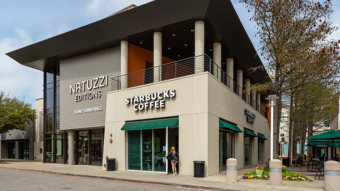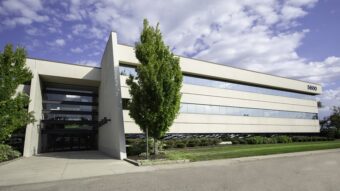Grocery-anchored centers are the new normal, while shifting retail landscape drives smaller footprint in the city of Chicago
Chicagoland can expect to see less larger-scale retail spaces averaging five million-plus square feet. That’s because grocery-driven projects and smaller footprint urban infill developments are taking over, according to Mid-America Real Estate Corporation‘s Chicagoland 2016 Shopping Center Report.
Shopping centers witnessed a 22 percent decrease in new developments from 2014 to 2015, jumping from 2.65 million square feet to 2.07 million square feet. The 2016 Shopping Center Report anticipates another 27 decrease with approximately 1.51 million square feet planned for the coming year.
Compared to 2011’s all-time low of 1.03 million square feet, the latest decrease in new development doesn’t appear to be very significant, Andy Bulson, Mid-America principal/director of suburban tenant representation and author of the Shopping Center Report, says.
“No one has stopped doing deals since 2011. The difference in square footage planned for 2016 compared to square footage completed in 2014 and 2015 is just a result of construction timing,” he explained. “People who were doing deals then are still doing deals now.”
The size of the projects have been getting smaller but the total of new developments and expansions have remained the same in the past three years. There were 15 new developments in 2015, 12 in 2015, and an anticipated 14 projects in 2016.
As for the type of retailers leading new development, the Shopping Center Report points to Gourmet-grocery anchored retail leading the pack.
Gourmet Grocery
The report says it’s a combination of the continued grocery focus of new 2015 development and a shifting retail scene that’s influencing this trend of fewer square feet developed each year.
In 2015, nine of the 13 developed centers were grocery-anchored, and nine of the 14 planned centers in 2016 will also be grocery-anchored.
“We will hopefully continue to always have one big New City-like project every year,” Bulson said. “However, even New City is grocery-anchored. It’s an urban presentation of a suburban center after all.”
Mariano‘s led grocery development in the Chicago area in 2015 with six new centers totaling 815,000 square feet. For 2016, the grocer plans for two more centers totaling 139,300 square feet.
Meanwhile, Walmart came close with two new centers in 2015 totaling 390,000 square feet and two planned for 2016 for a total of 377,000 square feet.
Chicago Suburbs
The only non-grocery anchored center planned for suburban Chicago in 2016 is Bond Companies’ Kildeer Village Square, located at the northeast corner of Plum Grove and Rand Road in Kildeer, Illinois. The 160,000-square-foot center, expected to deliver in fall 2016, will be anchored by Nordstrom Rack, DSW, and a possible fitness center.
Also this year, Walmart plans to develop stores in Olympia Fields, Illinois, and Richton Park, Illinois, and Meijer will expand to Flossmoor, Illinois.
Looking ahead to 2016
Bulson explained that large anchor tenants like Target, Kohl’s and home improvement retailers aren’t expanding anymore, therefore, we will begin to see a lot more smaller non-anchored centers.
Additionally, development is trending toward the City of Chicago versus the suburbs. In 2016, eight of the 14 planned developments fall within the city. This is because retailers are chasing the low risk deals in densely populated trade areas, according to Bulson.
The report shows that grocery-anchored projects will drive almost all development planned in the suburbs in 2016.



